

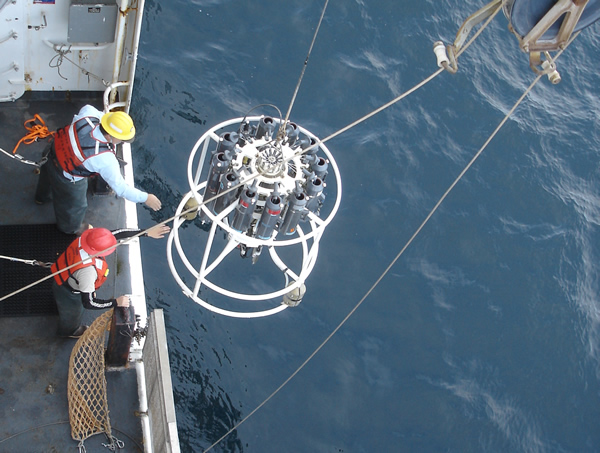
|
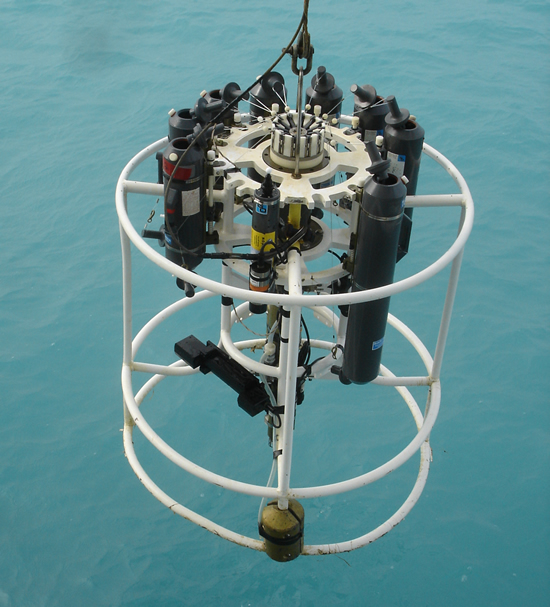
|
| Bering Sea water is typically blue, as seen in this photo of a CTD deployment. [image: A. Shimada] | Coccolithophores cause the seawater to appear more green. [image: A. Shimada]. |
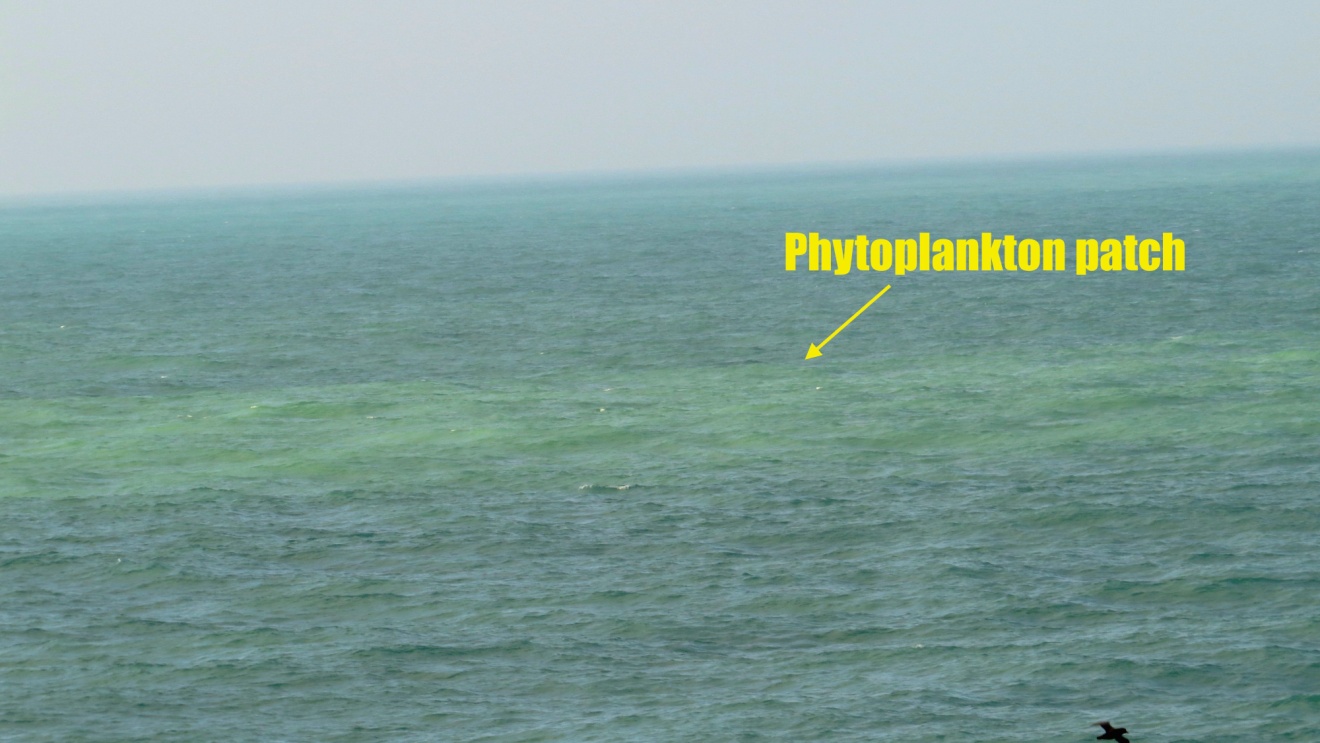
|
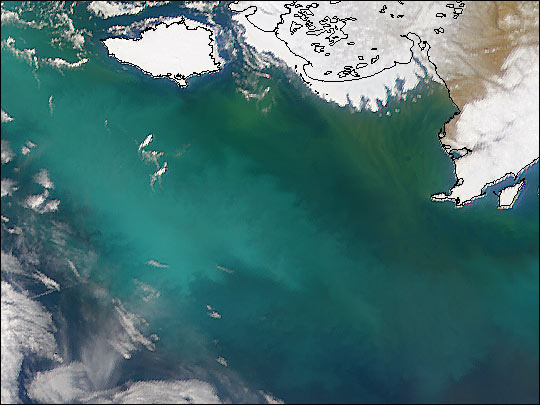
|
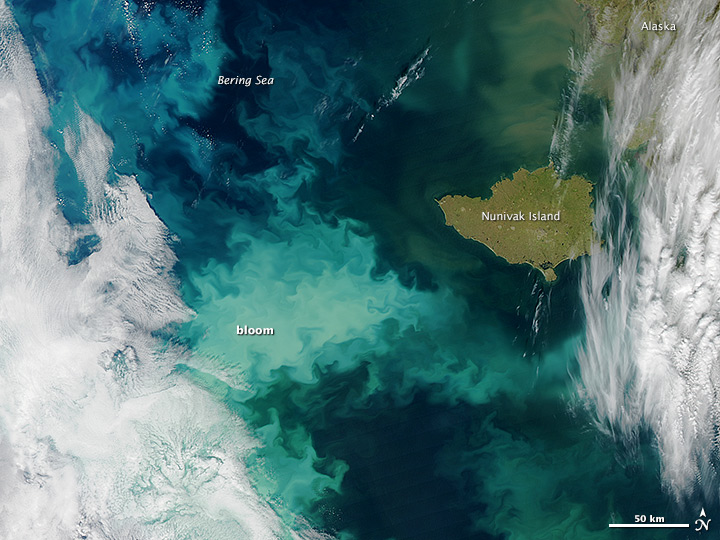
|
| Lighter sea color areas are dense patches of phytoplankton, as seen from the ship. [Image by Martin Reedy, annotated by Kim Martini]
|
NASA’s Aqua/MODIS satellite image of a 2000 coccolithophore bloom on the eastern Bering Sea shelf. Note the change in satellite image resolution between this 2000 image and the 2014 image to the right. [image courtesh of the NASA Earth Observatory: http://earthobservatory.nasa.gov/IOTD/view.php?id=588&eocn=image&eoci=related_image] |
When the cloud cover just south of Nunivak Island in the Bering Sea parts, the bloom can be seen in satellite imagery acquired by NASA’s Aqua/MODIS satellite on Sept. 5, 2014. The delicate green swirls at the edges of the bloom are caused by eddies, swirling currents that stretch the phytoplankton patch into emerald-colored filaments. [image courtesh of the NASA Earth Observatory |
| EcoFOCI Project Office NOAA/PMEL and NOAA/AFSC |
|
| 7600 Sand Point Way NE Seattle, Washington 98115 Comments and information |
|